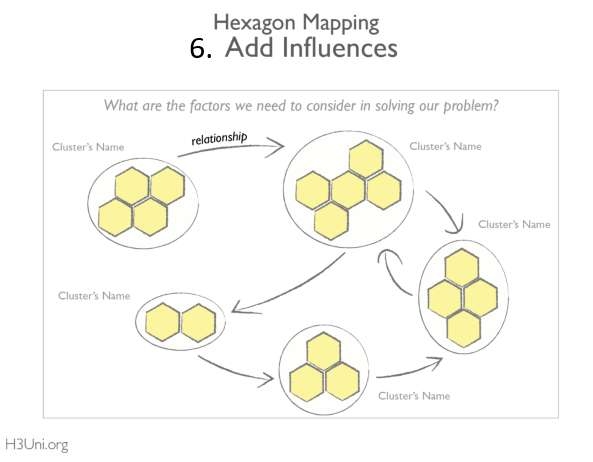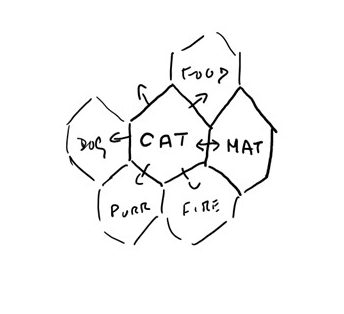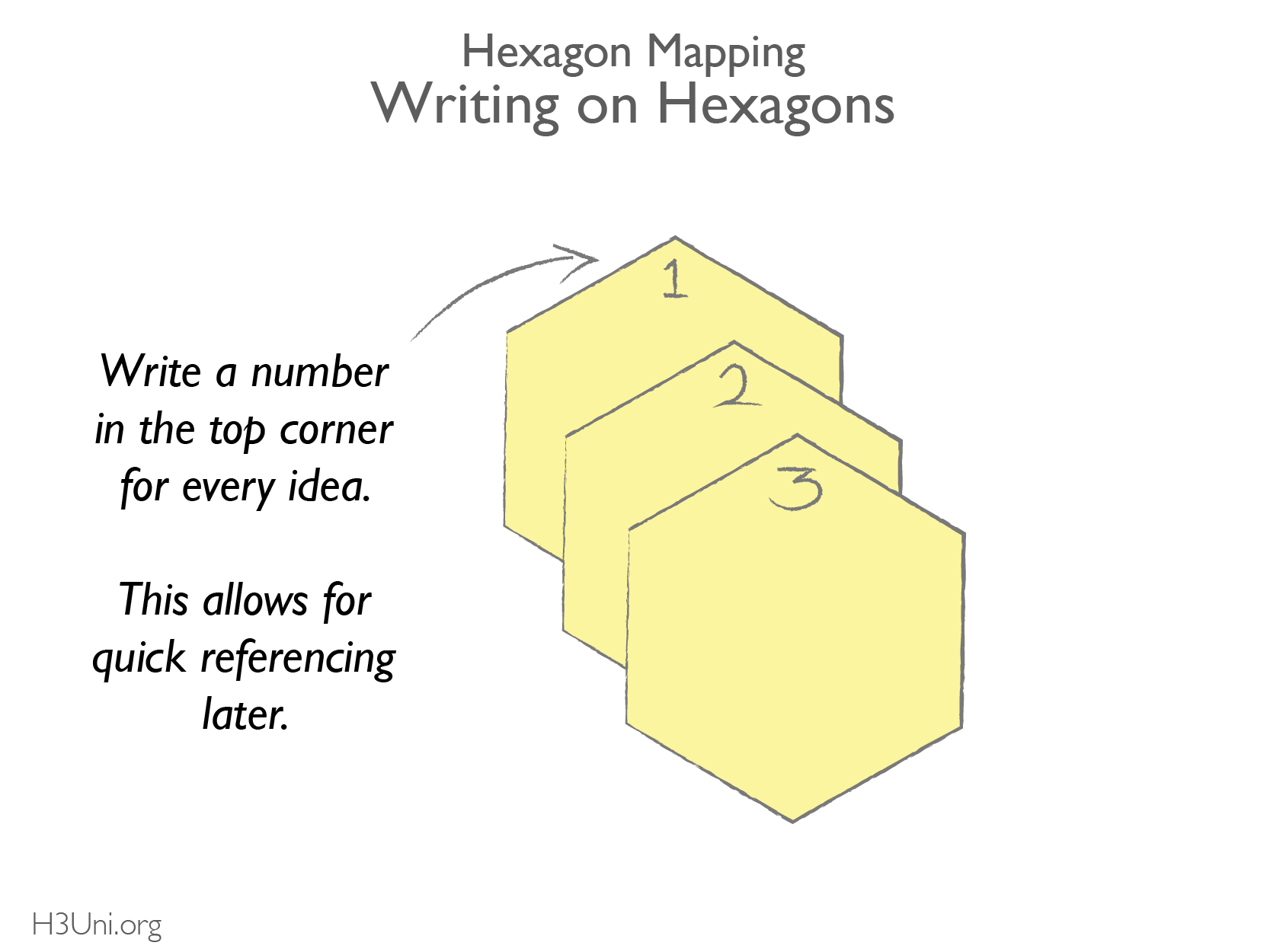Tutorial
Thinking with Hexagons
Complex situations are not composed of a number of isolated elements that can be treated separately – there are connections, some evident, some hidden, that affect the condition and the role of any factor. This means that acting on the check list or ‘tick box’ approach will inevitably lead to unintended consequences as the feedback between factors kicks in. Yet when we are working with a complex situation we often write check lists to gather up the range of factors we need to pay attention to.
An antidote to this which greatly improves our capacity to grasp complexity is hexagon mapping – a tool and technique which helps to tap into our intuitive and visual understanding of connecting patterns in a direct more powerful way rather than analytical methods.
Hexagon Mapping is a foundational method of H3Uni. It can be used on its own to explore a complex situation, but hexagon clustering is also a core component of many other methods, where it plays a role in transitioning from one stage of a process to another, allowing an effective way to chunk the output in a way appropriate to the task in hand. In this tutorial we introduce it as a stand-alone method. When used within other methods you will find you just use the clustering subset of the steps, with others being provided by the method concerned.
As a method in itself hexagon mapping is a way of getting to grips with complex and messy situations quickly and flexibly and to find new patterns of relationships between ideas. It combines comprehensiveness, organization and space for creative insight. It goes way beyond creating a checklist or a brain dump of sticky notes. The result is a hexagon map that becomes a shared tool problem solving, for developing strategy and action planning.
Hexagon thinking and mapping supports three aspects of collective intelligence. Firstly, it enables a group to create a shared and visible mental model of the issue of concern that is unique to their knowledge and concerns in the present moment; secondly it helps a group to take their area of concern from what starts as a fragmented collection of views to a map which is inclusive and reveals systemic connections that point to a new possible synthesis or integration; third the procedures and tools enable everyone to take part such that all voices are heard.
Hexagon mapping builds on the foundation of visual facilitation, relying on the disciplines of eliciting, gathering, harvesting and synthesizing. If you are not already familiar with these foundations it is recommended you look at that tutorial first.
Re-patterning with hexagons
The power of hexagon thinking rests on the nature of the hexagon geometry. You can take a hexagon and add one to each side, connecting the one in the middle to six others. This immediately disrupts our normal linear thinking, and allows us to present a set of ideas in a way that helps our minds see them in relationship. Our verbal language, for example “the cat sat on the mat”, freezes the relationship between the cat and the mat to just one of several possibilities. Place the ‘cat’ in a hexagon and it now has potentially six relationships of which ‘mat’ is only one.
You can of course put some rectangular stickies into a cluster, but experience shows that is much weaker as a thinking tool because you cannot build up the number of connections in the way you can with hexagons.
Building on the power of the hexagon cluster you can move on to using the way it enables re-patterning, with the accent on the ‘re’. Hexagons can be moved around into different patterns and clusters. If thinking gets fixed in a pattern you can challenge this through trying different patterns and combinations.
The weakest form of clustering is just to categorise ideas that are all about the same thing, and there are times when that is all that is required. Typically, however, the point of H3Uni methods is to open up a creative response to a situation and that will need a different thinking approach that is generative. The basic idea of generative thinking is ‘1 + 1 = 3’, in other words, taking two ideas and seeing a fresh connection that is not contained in either of them. A simple way to contrast categorical and generative thinking is to compare the way you arrange clothes in your wardrobe, and how to pick them out to go out for the night: the first (if you are tidy) is a categorical organization, the second is a creative combination that is more than the sum of the parts.
As an exercise, take a topic where ideas have been segregated into two or more distinct classes. Take one idea from one class and another from a different class. Put them on hexagons next to each other, with a blank one between them.
Ask yourself what new idea or ideas are suggested by the juxtaposition? Is there an idea that goes beyond both whilst retaining some of their significance? Try this a few times. Notice the way that just having this arrangement in front of you encourages your mind to hunt for a creative combination. You will find this approach to generative hexagon thinking used in Dilemma Navigation.
Having explored alternative clusters, and converged on one, a further skill is that of telling a narrative behind the hexagons. Being able to tell a story that weaves the hexagon topics together helps to bring out their systemic interaction. Try this out for the different processes and see for yourself what simple story holds the cluster together. Developing your instincts around this is key for helping a group come up with a cluster label.
There is a skill in selecting the approach to hexagon mapping and clustering so that you are bringing out new connections not in the prevailing mindset, and as a facilitator you need to develop this skill to see when this is what is needed. H3Uni methods are structured into steps to help set up the appropriate approach to clustering and provide guidance on what is required for that method.
Basics of capturing hexagons
There are a few basic guidelines to get the best out of using hexagons:
- Using them with a point uppermost works better than a flat edge, and is the standard technique assumed in all H3Uni methods. It provides space for the numbering, and works better when you want to put them side by side for generative thinking. You can also use the space at the bottom point for coding or classification e.g. to record who made a point.
- Write clearly in capitals, and don’t use more than eight words – this will ensure the points are simple and readable by everyone.
- If you haven’t got something clear, or the person doesn’t agree with your distillation, you need to be ready to start again, so make sure you have plenty spare.
- Some processes benefit from having more than one colour. Yellow, red, green and blue are enough for everything.
Hexagon mapping and influence diagramming process
The best way to understand the use of hexagons is to work through the Hexagon Mapping Facilitation Guide, treating yourself as the ‘client’ who is being facilitated. This will show you how the basics of capture and clustering support a simple yet powerful approach to system thinking that we call influence diagramming. This basic method can be used in all sorts of situations to do initial enquiry and is an excellent way to get started on a project and guide the use of other H3Uni Methods.
Hexagons are deceptively simple. H3Uni methods treat them as idons which are symbols containing significant meaning for the participating group. The power comes from the whole technique of using a large white space representing the shared mind of the group. This is the space equivalent to the ‘front of the mind’ in an individual. So the clustering and influence diagram build up group mind around the topic. A key process aspect of the method is that the clustering and relating express an emergent property of the group conversation which is supported visually as well as verbally. And unlike graphical facilitation, everyone participates. The end result is that people’s individual mental models have been slightly deconstructed and reconstructed through the process to form a shared mental model. Of course everyone will still interpret it in their own way but extensive use of the method shows that the level of attunement, alignment and mutual understanding in the group increase significantly.
Method
The Hexagon Mapping method is both a self-contained process for exploring any complex issue, but also provides steps that can be used in any other H3Uni method for clustering the output of one step as input to the next.
![]()
Creative Commons Attribution-ShareAlike 4.0 International (CC BY-SA 4.0) license framework.
How to Use this License
CC BY-BY-SA
This license allows reusers to distribute, remix, adapt, and build upon the material in any medium or format, so long as attribution is given to the creator. The license allows for commercial use. If you remix, adapt, or build upon the material, you must license the modified material under identical terms.
Read about Open Access to H3Uni Methods and Materials



